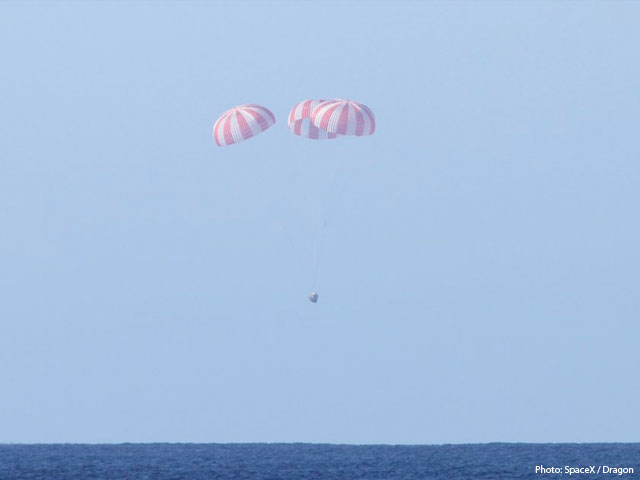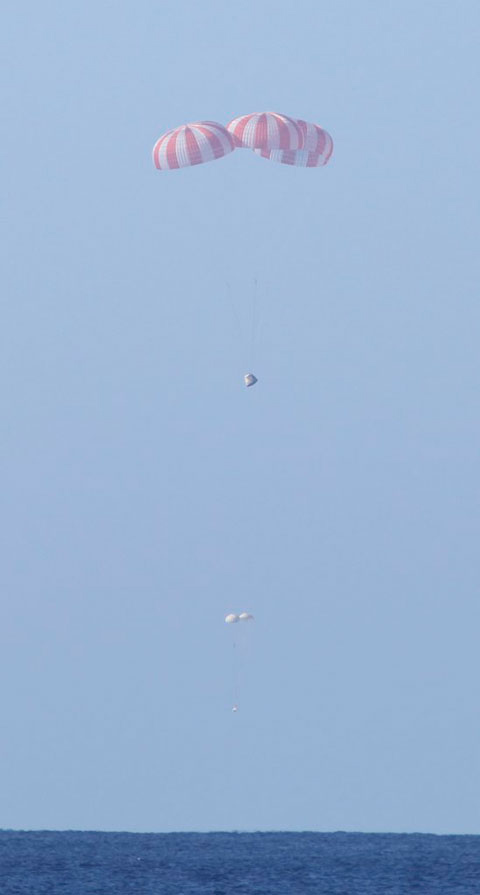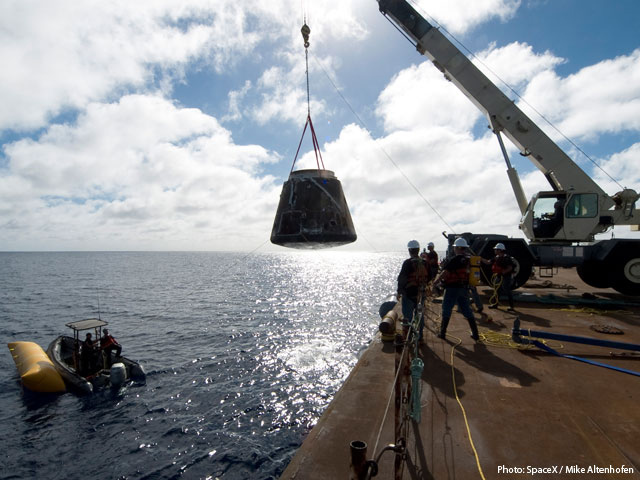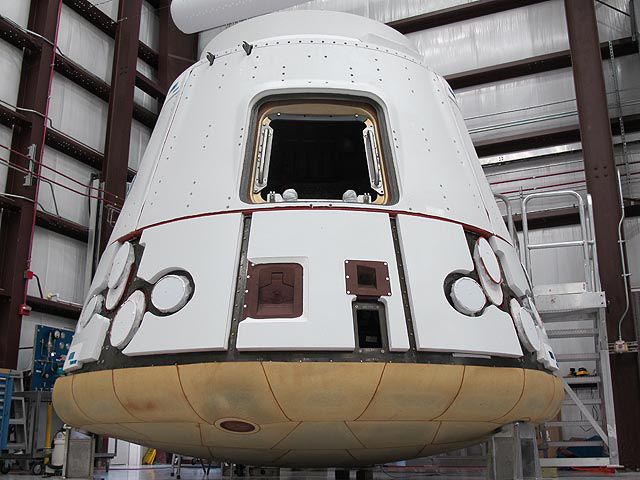Gallery: Dragon, SpaceX's Private Spacecraft
Dragon Spacecraft Landed in the Pacific Ocean
The Dragon spacecraft landed in the Pacific Ocean 3 hours, 19 minutes and 52 seconds after liftoff—less than a minute after SpaceX had predicted and less than one mile from the center of the landing target.
COTS Demo 1 Mission Orbital Path
Image above illustrates COTS Demo 1 mission orbital path. The yellow triangle over the Atlantic ocean marks Dragon’s initial separation from Falcon 9, and the yellow square off the Western coast of the United States marks the location where Dragon landed.
Dragon Spacecraft Viewed from the Second Stage
High contrast view of the Dragon spacecraft (circle at center) viewed from the top of the second stage as it departs over the curved horizon of the Earth. The rectangles indicate locations of three of the nano satellite deploying P-PODs carried on this mission.
Artist’s Rendition of Dragon Spacecraft Reentering Earth’s Atmosphere
Artist’s rendition of Dragon, thermally protected by SpaceX’s PICA-X advanced heat shield, reentering Earth’s atmosphere.
Dragon Spacecraft with Main Parachutes Deployed
Dragon's three main parachutes fully deployed. Below float two drogue parachutes which deployed first to slow and stabilize the spacecraft.
Falcon 9 Stage Separation
After Falcon 9 stage separation, flames are barely visible around the nozzle as the second stage engine ignites and the first stage falls back to the Earth below.
Dragon Capsule Lifted onto Barge
The SpaceX crew brought Dragon back to the barge where the crane lifted it from the water.
Breaking space news, the latest updates on rocket launches, skywatching events and more!
Dragon Spacecraft in the SpaceX Hangar at Cape Canaveral
In the SpaceX hangar at Cape Canaveral, the Dragon spacecraft prepares for integration with the Falcon 9 launch vehicle. Visible at the base of the spacecraft is Dragon’s heat shield, made of PICA-X, the SpaceX manufactured variation on NASA’s Phenolic Impregnated Carbon Ablator (PICA) heat shield material. Dragon will reenter the Earth’s atmosphere at around 7 kilometers per second (15,660 miles per hour), heating the exterior up to 1850 degrees Celsius. However, just a few inches of the PICA-X material will keep the interior of the spacecraft at a comfortable temperature.
SpaceX's Mission Control Center SpaceX's Mission Control CenterCredit: SpaceX
SpaceX's Mission Control Center located at their headquarters in Hawthorne, California.
Astronauts Cady Coleman and Scott Kelly Visit the Dragon Capsule
Even when outfitted with the full cargo storage system, Dragon has plenty of room. Visiting NASA astronauts Cady Coleman and Scott Kelly discuss spacecraft cargo operations with SpaceX engineers. Both experienced space travelers, Cady and Scott are scheduled for upcoming missions to the ISS.

Space.com is the premier source of space exploration, innovation and astronomy news, chronicling (and celebrating) humanity's ongoing expansion across the final frontier. Originally founded in 1999, Space.com is, and always has been, the passion of writers and editors who are space fans and also trained journalists. Our current news team consists of Editor-in-Chief Tariq Malik; Editor Hanneke Weitering, Senior Space Writer Mike Wall; Senior Writer Meghan Bartels; Senior Writer Chelsea Gohd, Senior Writer Tereza Pultarova and Staff Writer Alexander Cox, focusing on e-commerce. Senior Producer Steve Spaleta oversees our space videos, with Diana Whitcroft as our Social Media Editor.










